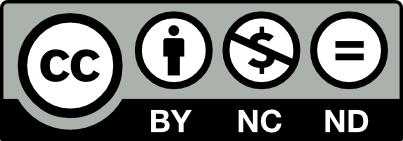This page is licensed under Creative Commons under Attribution 4.0 International. Anyone can share content from this page, with attribution and link to College MatchPoint requested.
What This Year's Early Admissions Results Reveal About the Growing Challenge for Out-of-State Applicants
This year’s admissions results highlight an increasing challenge for students applying to public universities from out of state. With strict in-state quotas, rising application numbers, and financial incentives shaping admissions policies, acceptance rates for non-residents continue to shrink. Schools like UNC Chapel Hill and the University of Michigan are admitting fewer than 15% of out-of-state applicants, even among high-achieving students with strong academic credentials. Families must take a strategic approach—leveraging in-state advantages where possible or targeting public universities that offer stronger out-of-state opportunities.
Why Are Out-of-State Students Facing Steeper Odds?
Several key factors contribute to the growing difficulty for out-of-state applicants:
- In-State Quotas and Legislative Mandates: Many states require public universities to reserve a majority of their seats for in-state students. For example, UNC Chapel Hill and UVA allocate over 80% of their early admission slots to in-state applicants. Similarly, the University of Texas System mandates that 90% of undergraduates must be Texas residents, making out-of-state admissions highly competitive—even as out-of-state applications have surged nearly 50% year over year.
- Financial Incentives for Universities: Out-of-state students pay significantly higher tuition—often two to three times more than in-state students—but universities still limit their numbers. The University of Michigan, for instance, charges non-residents nearly $76,000 per year but caps out-of-state enrollment at 35%. The University of Washington is even stricter, admitting fewer than 3% of out-of-state applicants to its highly competitive Computer Science major.
- Deferrals and Yield Protection: Some universities defer or reject highly qualified out-of-state applicants simply because they assume these students will choose elite private colleges instead. Clemson, for example, deferred over half of its Early Action applicants, even those with top-tier academic credentials. Similarly, UT Austin admitted only 25–30% of its class during Early Action, prioritizing Texas residents to maintain a strong in-state enrollment.
The Largest Admission Gaps Between In-State and Out-of-State Students
Admissions results from this year reinforce just how different acceptance rates can be for in-state versus out-of-state applicants:
- UNC Chapel Hill and UVA admit more than 40% of in-state applicants, while their out-of-state admit rates remain in the single digits.
- The University of Michigan admits about 40% of in-state applicants, but only 15% of non-residents gain acceptance.
- The University of Washington accepts 55% of in-state applicants but only 18% of those from out of state. For its top-ranked Computer Science major, the out-of-state admission rate is below 3%.
- Southern schools like Arkansas and Ole Miss offer generous merit aid to out-of-state students but still admit them at lower rates than in-state applicants.
Schools Where Out-of-State Students Face the Toughest Odds
- UNC Chapel Hill: With an in-state admission rate of 43%, UNC prioritizes local students. Out-of-state applicants face an uphill battle, with an acceptance rate of just 8%, even for those with SAT scores above 1500.
- University of Michigan: The school defers 85% of Early Action applicants—most of whom are out-of-state students—to maintain control over its final admission numbers. Michigan residents have a significantly higher chance of being accepted.
- University of Washington: Known for its elite STEM programs, Washington’s Computer Science department admits fewer than 3% of out-of-state applicants, making it one of the most competitive programs in the country.
What Can Families Do to Navigate These Trends?
Understanding these trends is key to developing a strong college application strategy. Here’s how families can improve their chances:
- For In-State Students: Take full advantage of state-specific admission policies. For example, Texas’ Top 6% Rule guarantees admission to UT Austin for students in the top percentage of their high school class. Applying Early Action can also help secure a spot before competition from out-of-state students intensifies.
- For Out-of-State Students: Target public universities that offer strong merit scholarships for non-residents, such as Alabama and Arizona State. Applying to honors colleges at less competitive public universities—such as those at Utah or Oregon State—can provide an excellent education with better admission odds.
- For Students Applying to Competitive Majors: Direct admission pathways can help applicants bypass internal transfer challenges that some public universities impose. For example, Indiana University’s Kelley School of Business offers direct admission to top applicants. Submitting strong SAT/ACT scores, even at test-optional schools, can also help offset major-specific competition, particularly in highly selective STEM programs like Georgia Tech’s engineering school.
Being Strategic in the Admissions Process
Public universities must balance their mission to serve in-state students while also bringing in much-needed tuition dollars from out-of-state applicants. This year’s admissions results confirm what many families have long suspected—gaining admission to a top public university as an out-of-state student is becoming just as competitive as applying to private institutions.
Families must be strategic in their college search, prioritizing in-state policies, identifying universities with strong out-of-state admission pathways, and understanding which schools offer the best opportunities for their students’ academic goals. By staying informed and proactive, families can successfully navigate this increasingly complex admissions landscape.


